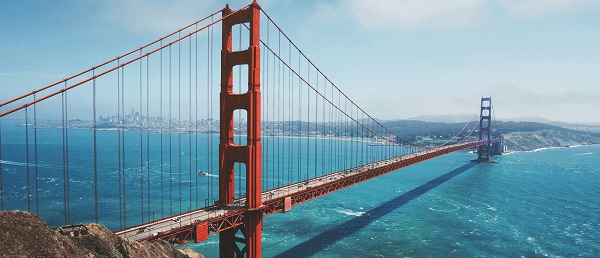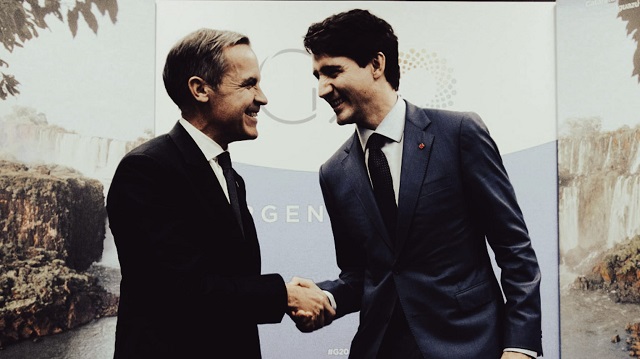National
Trudeau not doing the little things to make life affordable

From the Canadian Taxpayers Federation
Author: Franco Terrazzano
Figuring out how to make life more affordable for Canadians shouldn’t be like unravelling Einstein’s theory of relativity.
If Prime Minister Justin Trudeau won’t do the big things to make life more affordable, he could at least do the little things.
“We know Canadians are facing challenging times right now, people are squeezed between the cost of groceries, rents,” Trudeau said during a cabinet retreat in Montreal aimed at “bringing down the cost of living.”
Trudeau knows “people are squeezed” because his tax hikes are some of the things that are doing the squeezing.
Take the carbon tax. Trudeau may never scrap his carbon tax, but he could at least not raise it again on April 1.
Even after the rebates, average families will be out hundreds of dollars this year because of the higher heating bills, gas prices, inflation and the economic damage wrought by the carbon tax, according to the Parliamentary Budget Officer.
Governments of all political stripes have paused fuel taxes to provide relief.
British Columbia’s New Democrats delayed their carbon tax hike during the pandemic. Manitoba’s NDP government suspended its fuel tax. Newfoundland and Labrador’s Liberals are also providing fuel tax relief, and so have the Conservative governments in Alberta and Ontario.
The United Kingdom, Sweden, Australia, South Korea, the Netherlands, Germany, Norway, India, Ireland, Israel, Italy, New Zealand and Portugal also provided fuel tax relief.
To add insult to injury: the feds charge their sales tax on top of the carbon tax. That’s right. The federal government applies its sales tax after all the per-litre taxes are added.
This tax-on-tax is costing Canadians about $500 million this year, according to the PBO. By the end of 2030, the GST on the carbon tax alone will have cost Canadians $6.2 billion.
Ending the tax-on-tax is a simple way to save Canadians billions when fuelling up or heating their homes.
Trudeau knows taxes make it more expensive to stay warm during the winter. Otherwise, why would he have taken the carbon tax off home heating oil for three years?
That political ploy was an attempt to help Atlantic Canadians amid tanking poll numbers in this typical Liberal stronghold.
But 97 per cent of Canadian families use other forms of energy to heat their homes. Trudeau should extend the relief he provided to Atlantic Canadians to everyone by taking the carbon tax off all forms of home heating. That would save the average family using natural gas about $1,100 over three years.
Trudeau can also give farmers relief and ease grocery prices by making sure the original Bill C-234 becomes law this year, which would remove the carbon tax from the natural gas and propane used on farms.
The House of Commons already passed this relief twice, but it still isn’t law because of shenanigans in the Senate.
The carbon tax on natural gas and propane that’s used to heat barns and dry grain will cost farmers $1 billion by 2030, according to the PBO.
By making it more expensive for farmers to grow food, the carbon tax makes it more expensive for Canadians to buy food.
There’s one more easy way for Trudeau to provide relief: stop his upcoming 4.7 per cent alcohol tax hike.
Last year, the feds capped the annual increase at two per cent. Trudeau shouldn’t have hiked the tax at all, but the smaller increase reduced the tax burden by $100 million. At a time when both consumers and businesses are struggling, freezing the alcohol tax is the least Trudeau could do.
The Trudeau government doesn’t need an expensive get-away in Montreal to figure out how to make life more affordable. There’s a simple solution: stop taking so much money from Canadians.
Break The Needle
B.C. doubles down on involuntary care despite underinvestment

By Alexandra Keeler
B.C.’s push to replace coercive care with community models never took hold — and experts say province isn’t fixing that problem
Two decades ago, B.C. closed one of the last large mental institutions in the province. The institution, known as Riverview Hospital in Coquitlam, had at its peak housed nearly 5,000 patients across a sprawling campus.
There, patients with mental illnesses were subjected to a range of inhumane treatments, city records show. These included coma therapy, induced seizures, lobotomies and electroshock therapy.
When the province transferred patients out of institutions like Riverview during the 1990s and early 2000s, it promised them access to community-based mental health care instead. But that system never materialized.
“There was not a sustained commitment to seeing [the deinstitutionalization process] through,” said Julian Somers, a professor at Simon Fraser University who specializes in mental health, addiction and homelessness.
“[B.C.] did not put forward a clear vision of what we were trying to achieve and how we were going to get there. So we languished.”
Today, amid a sharp rise in involuntary hospitalizations, experts say B.C. risks repeating the mistakes of the past. The province is using coercive forms of care to treat individuals with mental health and substance use disorders, while failing to build community supports.
“We’re essentially doing the same thing we did with institutions,” said Somers, who began his clinical career at Riverview Hospital in the 1980s.
“[We’re] creating a system that doesn’t actually help people and may make things worse.”
Riverview’s legacy
B.C.’s push for deinstitutionalization was driven by growing evidence that large psychiatric institutions were harmful, and that community-based care was more humane and cost effective.
Nationally, advances in antipsychotic medication, rising civil rights concerns and growing financial pressures were also spurring a shift away from institutional care.
A 2006 Senate report showed community care could match institutional care in both effectiveness and cost — provided it was properly funded.
“There was sufficient evidence demonstrating that people with severe mental illness had better outcomes in community settings,” said Somers.
Somers says people who stay long term in institutions can develop “institutionalization syndrome,” characterized by increased dependency, worse mental health outcomes and greater social decline.
At the time, B.C. was restructuring its health system, promising to replace institutions like Riverview with a regional network of mental health services.
The problem was, that network never fully materialized.
Marina Morrow, a professor at York University’s School of Health Policy and Management who tracked B.C.’s deinstitutionalization process, says the province placed patients in alternative care. But these providers were not always well-equipped to manage psychiatric patients.
“Nobody left Riverview directly to the street,” Morrow said. “But some … might have ended up being homeless over time.”
A 2012 study led by Morrow found that older psychiatric Riverview patients who were relocated to remote regional facilities strained overburdened and ill-equipped staff, leading to poor patient outcomes.
Somers says B.C. abandoned its vision of a robust, community-based system.
“We allowed BC Housing to have responsibility for mental health and addiction housing,” he said. “And no one explained to BC Housing how they ought to best fulfill that responsibility.”
Somers says the province’s reliance on group housing was part of the problem. Group housing isolates residents from broader society, instead of integrating them into a community. A 2013 study by Somers shows people tend to have better outcomes if they get to live in “scattered-site housing,” where tenants live in diverse neighbourhoods while still receiving personalized support.
“All of us … are influenced substantially by where we live, what we do, and who we do things with,” he said.
Somers says a greater investment in community care would have emphasized better housing, nutrition, education, work and social connection. “Those are all way more important than medical care in terms of the health of the population,” he said.
“We closed institutions having no [alternative] functioning model.”
Reinstitutionalization
Despite B.C.’s efforts to deinstitutionalize, the practice of institutionalizing certain patients never truly went away.
“We institutionalize way more people now than we ever did, even at peak Riverview population,” said Laura Johnston, legal director at Health Justice, a B.C. non-profit focused on coercive health laws.
Between 2008 and 2018, involuntary hospitalizations rose nearly 66 per cent, while voluntary admissions remained flat.
In the 2023-24 fiscal year, more than 25,000 individuals were involuntarily hospitalized at acute care facilities, down only slightly from 26,600 the previous year, according to B.C.’s health ministry. These admissions involved about 18,000 unique patients, indicating many individuals were detained more than once.
Subscribe for free to get Break The Needle’s latest news and analysis – or donate to our investigative journalism fund.
In September 2024, a string of high-profile attacks in Vancouver by individuals with histories of mental illness reignited public calls to reopen Riverview Hospital.
That month, B.C. Premier David Eby pledged to further expand involuntary care. Currently, B.C. has 75 designated facilities that can hold individuals admitted under the Mental Health Act. The act permits individuals to be involuntarily detained if they have a mental disorder requiring treatment and are significantly impaired. These existing facilities host about 2,000 beds for involuntary patients.
Eby’s pledge was to add another 400 hospital-based mental health beds, and two new secure care facilities within correctional facilities.
Johnston, of Health Justice, says Eby’s announcement merely continues the same flawed approach. It “[ties] access to services with detention and an involuntary care approach, rather than investing in the voluntary, community-based services that we’re so sorely lacking in B.C.”
Kathryn Embacher, provincial executive director of adult mental health and substance use with BC Mental Health & Substance Use Services, says additional resources are needed to support those with complex needs.
“We continue to work with the provincial government to increase the services we are providing,” Embacher said. “Having enough resources to serve the most seriously ill clients is important to provide access to all clients.”
 |
θəqiʔ ɫəwʔənəq leləm’ (the Red Fish Healing Centre for Mental Health and Addiction) is for clients with complex and concurrent mental health and substance use disorders. | BC Mental Health and Substance Use Services website
Inertia
If B.C. wants to avoid repeating the mistakes of its past, it needs to change its approach, sources say.
One concern Johnston has is with Section 32 of the Mental Health Act. Largely unchanged since 1964, it grants broad powers to medical professionals to detain and control patients.
“It grants unchecked authority,” she said.
Data obtained by Health Justice show one in four involuntarily detained patients in B.C. is subjected to seclusion or restraint. And even this figure may understate the problem. B.C. only began reliably tracking its seclusion and restraint practices in 2020, and only collects data on the first three days of detention.
A B.C. health ministry spokesperson told Canadian Affairs that involuntary care is sometimes necessary when individuals in crisis pose a risk to themselves or others.
“It’s in these situations where a patient, who meets very specific criteria, may need to be held involuntarily under the Mental Health Act,” the spokesperson said.
But York University professor Morrow says those “specific criteria” are applied far too broadly. “We have this huge hammer [involuntary care] that sees everything as a nail,” she said. “Involuntary treatment was meant for rare, extreme cases. But that’s not how it’s being used today.”
Morrow advocates for reviving interdisciplinary care that brings psychiatry, psychology and primary care together in community-based settings. She pointed to several promising models, including Toronto’s Gerstein Crisis Centre, which provides community-based crisis services for those with mental health and substance use issues.
Somers sees Alberta’s recovery-oriented model as a potential blueprint. This model prioritizes live-in recovery communities that combine therapeutic support with job training and stable housing, and which permit residents to stay up to one year. Alberta has committed to building 11 such communities across the province.
“They provide people with respite,” Somers said.
“They provide them with the opportunity to practice and gain confidence, waking up each day, going through each day without drugs, seeing other people do it, gaining confidence that they themselves can do it.”
Johnston advocates for safeguards on involuntary treatment.
“There’s nothing in our laws that compels the health system to ensure that they’re offering community-based or voluntary based services wherever possible, and that they are not using involuntary care approaches without exhausting other options,” she said.
“There’s inertia in a system that’s operated this way for so long.”
This article was produced through the Breaking Needles Fellowship Program, which provided a grant to Canadian Affairs, a digital media outlet, to fund journalism exploring addiction and crime in Canada. Articles produced through the Fellowship are co-published by Break The Needle and Canadian Affairs.
Subscribe to Break The Needle.
Our content is always free – but if you want to help us commission more high-quality journalism,
consider getting a voluntary paid subscription.
Banks
Canada Pension Plan becomes latest institution to drop carbon ‘net zero’ target

From LifeSiteNews
Changes to the law require companies to more rigorously prove their environmental claims.
The investment group in charge of Canada’s governmental pension plan has ditched its “net zero” mandate, joining a growing list of major institutions doing the same.
According to the Canada Pension Plan (CPP) Investments’ latest annual report, the entity is no longer committed to carbon “net-zero” by 2050. The CPP’s ditching of the target comes after a number of major institutions, including the Royal Bank of Canada (RBC), Toronto-Dominion Bank (TD), Bank of Montreal (BMO), National Bank of Canada, and the Canadian Imperial Bank of Commerce (CIBC), all made similar moves in recent months.
While ditching the net-zero effort, chief executive of CPP Investments John Graham maintained that it is still “really important to incorporate climate and incorporate sustainability” in its long-term investment portfolio.
The dropping of the “climate” target comes as recent changes to Canada’s Competition Act now mandate that companies prove any environmental claims they make, with Graham insinuating these changes were a factor in the decision.
“Recent legal developments in Canada have introduced, kind of, new considerations around how net-zero commitments are interpreted, so that’s caused us to change a little bit how we talk about it, but nothing’s changed on what we’re actually doing.”
Over the past decade, left-wing activists have used “net zero” and “environmental, social & governance” (ESG) standards to encourage major Canadian and U.S. corporations to take particular stands on political and cultural issues, notably in promotion of homosexuality, transgenderism, race relations, the environment, and abortion.
Outside of Canada, many major corporations have announced they are walking back DEI and other related policies. Some of the most notable include Lowe’s, Jack Daniel’s, and Harley Davidson. Other companies such as Disney, Target, and Bud Light have faced negative sales due to consumers fighting back and refusing to patronize the businesses.
Since taking power in 2015, the Liberal government, first under Justin Trudeau and now under Mark Carney, has continued to push a radical environmental agenda in line with those promoted by the World Economic Forum’s “Great Reset” and the United Nations’ “Sustainable Development Goals.” Part of this push includes the promotion of so called net-zero energy by as early as 2035.
-

 Addictions23 hours ago
Addictions23 hours agoMan jailed for trafficking diverted safer supply drugs, sparking fresh debate over B.C. drug policies
-

 Alberta1 day ago
Alberta1 day agoHow Trump and Alberta might just save Canada
-

 Business1 day ago
Business1 day agoThe Liberals Finally Show Up to Work in 2025
-

 Alberta23 hours ago
Alberta23 hours agoJann Arden’s Rant Will Only Fuel Alberta’s Separation Fire
-

 Bruce Dowbiggin20 hours ago
Bruce Dowbiggin20 hours agoCaitlin Clark Has Been The Real Deal. So Her WNBA Rivals Hate Her
-

 Banks21 hours ago
Banks21 hours agoCanada Pension Plan becomes latest institution to drop carbon ‘net zero’ target
-

 Daily Caller22 hours ago
Daily Caller22 hours agoThere’s A Catch To California’s Rosy Population Stats
-

 espionage2 days ago
espionage2 days agoTrudeau Government Unlawfully Halted CSIS Foreign Operation, Endangering Officers and Damaging Canada’s Standing With Allies, Review Finds





